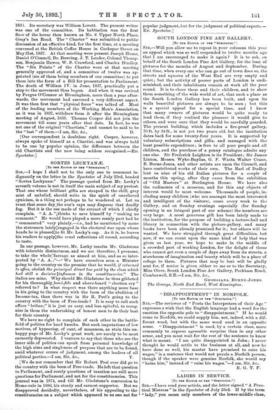THE LAST OF THE CHARTISTS. [To TIER EDITOR 0, TRH
" SPRCTATOR."1 SIR,—" The Chartists" is but a vague phrase. The " Charter " was drawn up by the governing committee of "The Working Men's Association." That Association was formed in June,.
1833. Its secretary was William Lovett. The present writer was one of the committee. Its habitation was the first floor of the house then known as No. 6 Upper North Place, Gray's Inn Road. The " Charter " was submitted to public discussion of an effective kind, for the first time, at a meeting convened at the British Coffee House in Coekspur Street on May 31st, 1837. At that meeting were present Joseph Flume, Daniel O'Connell, Dr. Bowring, J. T. Leader, Colonel Thomp- son, Benjamin Hawes, W. S. Crawford, and Charles Hindley. The "Six Points" of the Charter were at that meeting generally approved of, and a committee of twelve was ap- pointed (six of them being members of our committee) to put them into the form of a Bill for presentation to Parliament. The death of William IV. in June, 1837, practically put a stop to the movement thus begun. And when it was revived by Fergus O'Connor at Birmingham, more than a year after- wards, the movement had assumed a very different aspect. It was then first that "physical force" was talked of. Most of the leading members of the Working Men's Association, as it was in 1837, withdrew from it after the Birmingham meeting of August, 1838. Thomas Cooper did not join the movement till some years after that date. In fact, he was not one of the original "Chartists," and cannot be said to be the " last " of them.—I am, Sir, &c., D.
[Our correspondent is doubtless right. Cooper, however, always spoke of himself as a Chartist, and was always held to be one by popular opinion, the difference between the old Chartists and the new being seldom recognised.—En. Spectator.]



































 Previous page
Previous page